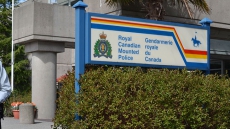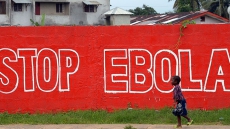CALGARY — The federal energy watchdog was right to question safety measures on the Line 9 oil pipeline, which weren't explained as well as they could have been, Enbridge Inc. (TSX:ENB) CEO Al Monaco said Wednesday.
If all went according to plan, the pipeline between southern Ontario and Montreal would have been starting up right about now.
But the National Energy Board said about a month ago that it was "not persuaded" Enbridge had done enough to ensure the environment would be protected in the event of a pipeline rupture. The watchdog said it would not allow it to start up until its concerns were addressed.
At issue was a condition of the pipeline's approval in March that had to do with where isolation valves were placed in relation to water crossings. The valves allow Enbridge to quickly shut of the flow of oil if a problem is detected.
The NEB told Enbridge "in pretty blunt terms" more information was needed, Monaco said.
"Since we received the NEB's directive, we've taken a hard look at what we had done technically and how we addressed the condition with the NEB," he said.
"It's clear from our second look that we should have done a much better job of explaining our approach to the placement of valves on the route and the NEB I think was right to question us on it."
Two weeks ago, Enbridge submitted further information to the NEB explaining why it believes Line 9 has the right shut-off valve configuration.
Enbridge won't know how long the pipeline's start up will be delayed until the NEB has finished reviewing that submission, but it will be "ready to roll" as soon as it's allowed to proceed, said Monaco.
Enbridge can't re-apply to start-up the line until at least 90 days after the concerns have been addressed.
Monaco said it came down to an issue of communication.
"I think in this particular case, it was pretty clear that on reflection when we looked at our response to the condition, we probably focused too much on various technical aspects in our response and we really needed to go to the essence of what was being asked which was to rationalize why we had our valves located in the right place."
Line 9, built in 1976, originally shipped oil from Sarnia, Ont., to Montreal, but was reversed in the late 90s in response to market conditions to pump imported crude westward. Enbridge wants to switch the direction back in an effort to feed cheaper Alberta crude to eastern refineries, like Suncor's refinery in Montreal.
The company plans to move 300,000 barrels of crude oil per day through the line, up from the current 240,000 barrels, with no increase in pressure.
Opponents have argued Enbridge's plan puts communities at risk, threatens water supplies and could endanger vulnerable species in ecologically sensitive areas.
Earlier Wednesday, Enbridge posted a net loss of $80 million or 10 cents per share for the three months ended Sept. 30 compared with a profit of $421 million or 51 cents per share a year ago.
However, adjusted earnings, which excluded unrealized derivative gains and losses and other one-time items, amounted to $345 million or 41 cents per share, up from $278 million or 34 cents per share a year ago.
Revenue totalled $8.3 billion, down from $9 billion in the same quarter last year.
Enbridge said its full year adjusted earnings are on track to meet its guidance for $1.84 to $2.04 per share.





